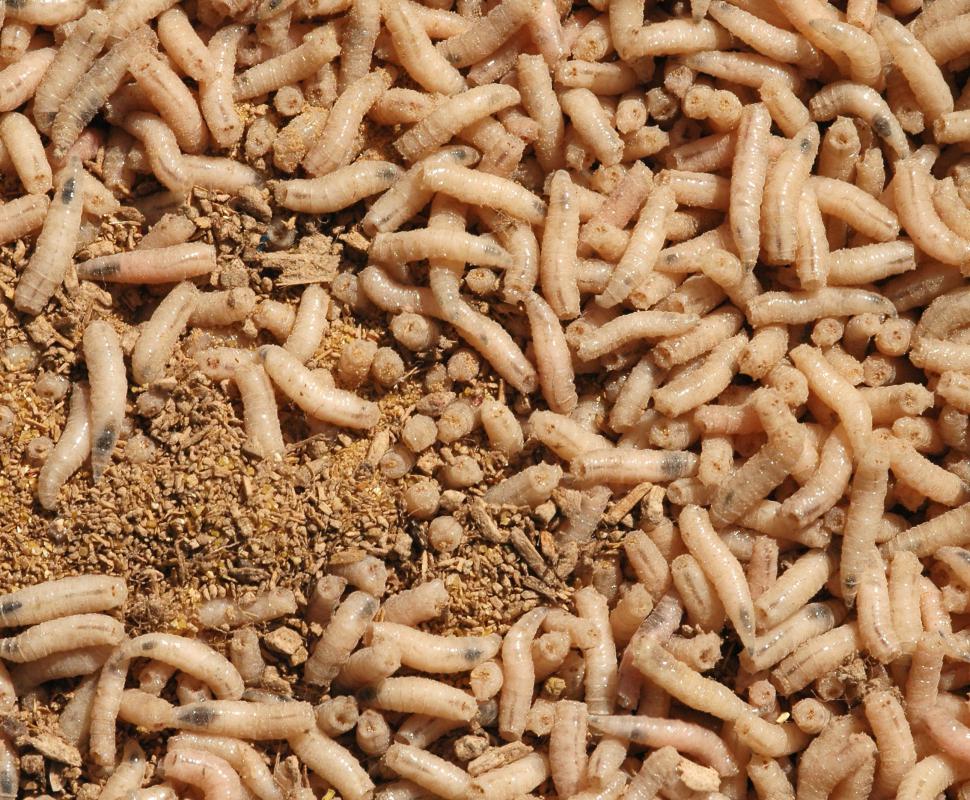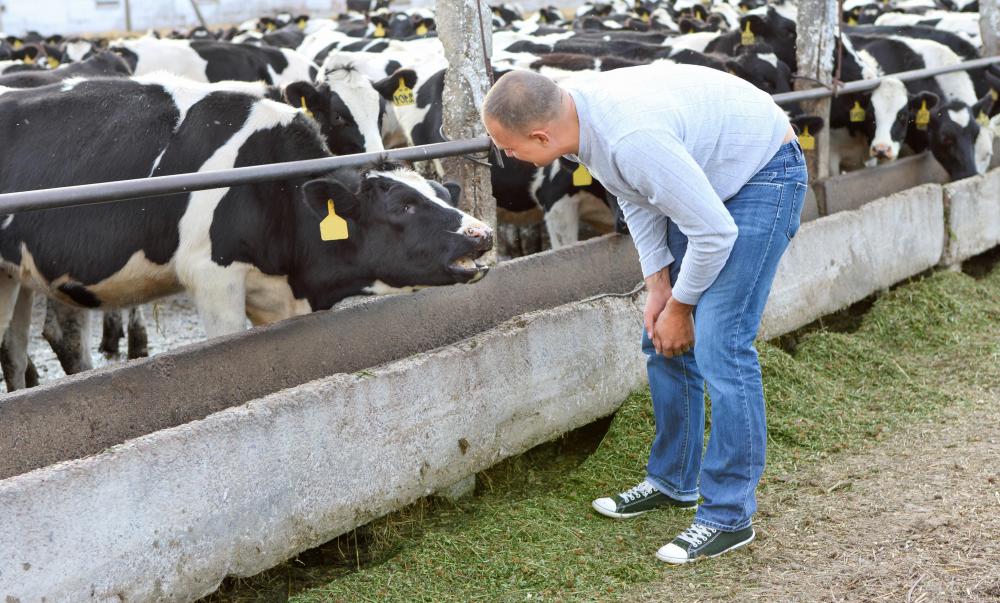At AllThingsNature, we're committed to delivering accurate, trustworthy information. Our expert-authored content is rigorously fact-checked and sourced from credible authorities. Discover how we uphold the highest standards in providing you with reliable knowledge.
What are Tsetse Flies?
Tsetse flies are bloodsucking flies in the genus Glossina. These African natives are probably most famous for the trypanosomes that they carry; these pathogens can cause a variety of illnesses, most notably sleeping sickness, a disease which is characterized by extreme lethargy, leading to coma and death if not treated. Tsetse flies also have a few interesting biological traits which make them a topic of study for people in the scientific community.
A typical tsetse fly has a yellow to brown body, depending on the species, and is generally larger than a housefly. At rest, tsetse flies fold their wings over each other, a distinctive trait which makes them very easy to identify. The flies also have unusually long proboscises, which are used to suck blood from their prey. Other features of the tsetse fly, like their hairy antennae, are a bit harder to identify in the field.

The life stages of the tsetse fly are quite interesting. The females actually incubate the larvae inside themselves until they reach the third instar stage, at which point they burst out and pupate underground, developing into adult tsetse flies within a matter of hours. While the females incubate the young, they feed them with a secretion much like milk which is presumably derived from their blood-rich diets.

These flies are famous for feeding indiscriminately on the blood of other animals. Many tsetse flies actually favor reptiles, although they are perfectly happy drinking the blood of mammals as well. In all instances, the flies can pass an assortment of diseases through their blood; the parasitic trypanosomes which cause sleeping sickness can actually live in the body of a tsetse fly. In animals, sleeping sickness is known as nagana; both human and animal versions are treatable with drugs.

As a general rule, tsetse flies favor areas of high humidity with dense vegetation. In parts of Africa where tsetse flies are endemic, many people have adapted their lifestyles to avoid the fly. For example, farmers may stick to the cooler, drier uplands to reduce the risk of exposure, and livestock are pastured on higher ground as well. Travelers in areas with tsetse fly populations are typically advised by regional governments to take precautions such as sleeping under an insect net.
Incidentally, tsetse means “fly” in Tswana, an African language. As a result “tsetse fly” is a bit of a redundant statement, and some biologists prefer to drop the “fly” altogether when discussing tsetses.
Frequently Asked Questions
What are tsetse flies and where can they be found?

Tsetse flies are bloodsucking insects primarily found in sub-Saharan Africa. They inhabit rural areas, living in woodland and savannah regions near water sources. These flies are vectors for trypanosomes, the parasites responsible for causing African trypanosomiasis, also known as sleeping sickness in humans and nagana in animals.
How do tsetse flies transmit diseases?
Tsetse flies transmit diseases through their bite. When they feed on the blood of an infected host, they pick up trypanosomes, which multiply within the fly. After about three weeks, the fly can transmit the parasites to new hosts, continuing the cycle of infection. The disease transmission is particularly concerning for both human health and livestock productivity.
What are the symptoms of sleeping sickness?
Sleeping sickness begins with fever, headaches, joint pains, and itching. As the disease progresses, neurological symptoms appear, including changes in behavior, confusion, sensory disturbances, and poor coordination. In its advanced stage, it leads to daytime sleepiness with nighttime sleep disturbances, hence the name 'sleeping sickness', and can be fatal if untreated.
Can tsetse flies be found outside of Africa?
Tsetse flies are endemic to Africa and are not naturally found in other continents. Their habitat is limited to the African region between the Sahara Desert and the Kalahari Desert. Efforts to control their population and prevent the spread of disease are focused within these geographical boundaries.
What methods are used to control tsetse fly populations?
Control methods for tsetse fly populations include insecticide-treated cattle, aerial spraying, the use of insecticide-impregnated traps and targets, and the sterile insect technique (SIT). SIT involves releasing sterilized male flies to reduce breeding success. These methods aim to reduce the prevalence of the flies and the associated spread of trypanosomiasis.
Are there any preventive measures for people living in or traveling to tsetse fly-infested areas?
For those in tsetse fly-infested areas, preventive measures include wearing long-sleeved shirts and pants in neutral colors, using insect repellent, and avoiding bushy areas during peak fly activity times. Tourists are advised to stay in well-screened or air-conditioned accommodations and to be vigilant about protective measures to reduce the risk of bites.
AS FEATURED ON:
AS FEATURED ON:














Discussion Comments
@allenJo - Yes, I believe that the fly can be a carrier for any disease. It can contract diseases from one host and transmit them to another.
What makes it particularly harmful is that some diseases can remain dormant for quite some time. This makes it impossible to treat them right away, since you don’t know you’ve been infected.
@nony - I wonder if AIDS can be carried by this fly in addition to usual tsetse fly disease? I think this would make it fatal, although sleeping sickness is certainly fatal enough from what I’m reading in the article.
While the article doesn’t say, my guess is that the tsetse fly probably doesn’t respond to the usual insect repellants you would use for the typical household fly.
There may be specialized sprays for it. But since these infestations affect entire regions my guess is that there is some kind of widespread tsetse fly control program that developers implement.
Maybe they use crop duster airplanes to spread a region that is filled with these insects to make sure that they are thoroughly wiped out before developing the region. They probably try to immunize their vital livestock too so that they can remain resistant to any few stray flies here or there.
@julies - Your comment reminds me of many pictures I have seen of undernourished children from Africa who have flies on their faces.
It makes me wonder if these are tsetse flies. It would be interesting to know how many children get this tsetse fly African sleeping sickness every year.
If they live in conditions where the tsetse flies are endemic, they probably don't have access to the proper care and medicine that is needed to treat this sickness.
I never realized that flies could carry such diseases for humans and animals. For me, I just saw them as pesky creatures who were annoying.
We have horses, so always get more than our share of flies. I have always called them horse flies, because they are much bigger than the regular house flies.
We spray them for flies in the summer, but this is more for their comfort than worrying about the flies giving them any kind of disease.
I am sure our horses are glad when the first frost comes and they aren't bothered with these flies for the rest of the winter.
It makes you wonder how the people who don't have a choice to escape the African tsetse fly deal with it on a daily basis. We live in enclosed, air conditioned houses and only have to worry about one or two flies getting in the house.
If you had to live with these flies every day, it would not only be annoying, but also harmful to your health.
Post your comments